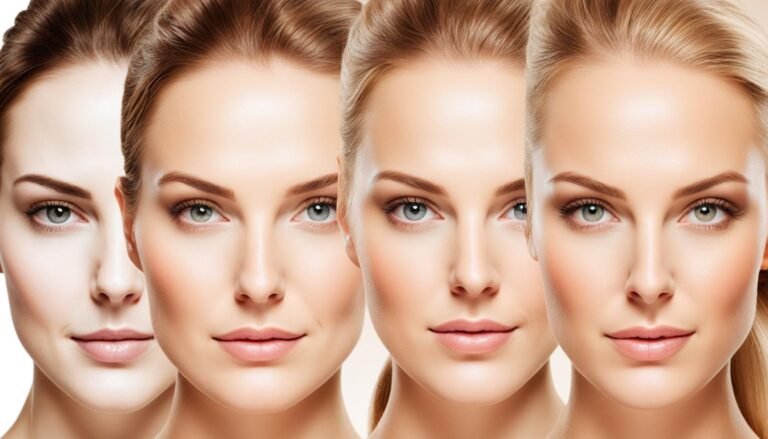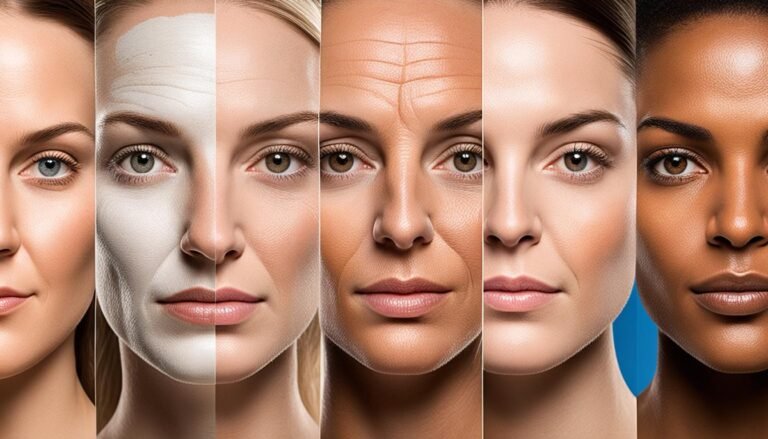Is it OK to have uneven skin tone?
Many of us strive for flawless, even-toned skin. But what if I told you that having an uneven skin tone is more common than you think? In fact, it’s perfectly normal. Yes, you read that right. Uneven skin tone is a natural part of our skin’s composition and doesn’t necessarily indicate a problem. So, does this mean we can embrace our unique skin and skip the efforts to achieve a perfectly even complexion? Or are there underlying factors that could be causing this unevenness? Let’s dive deeper into the world of skin discoloration, hyperpigmentation, and more to find out.
What is Uneven Skin Tone?
Uneven skin tone refers to skin discoloration and uneven texture. It can be caused by various factors such as sunspots, post-inflammatory hyperpigmentation, dry patches, and blotchiness. Both men and women can experience uneven skin tone, which can be a source of concern for many individuals. Understanding the causes of uneven skin tone can help in identifying appropriate skincare routines and treatments.
Sunspots and Hyperpigmentation
One of the primary causes of uneven skin tone is sun damage. Prolonged exposure to the sun’s harmful UV rays can lead to the development of sunspots or dark spots on the skin. Sunspots are characterized by an increase in melanin production, which occurs as the body’s natural defense response to protect the skin from further damage. These spots often appear as small, flat, brown patches on the skin’s surface.
In addition to sunspots, post-inflammatory hyperpigmentation can contribute to uneven skin tone. This occurs when areas of the skin darken due to inflammation caused by acne, eczema, psoriasis, or other skin conditions. The increased production of melanin in response to inflammation can result in patchy discoloration.
Dry Patches and Uneven Texture
Dry patches and uneven texture can also contribute to an uneven skin tone. Dry patches occur when the skin lacks moisture and becomes rough, flaky, or scaly. These patches can disrupt the skin’s overall texture, making it appear uneven. Environmental factors such as cold weather, low humidity, and harsh skincare products can exacerbate dryness and lead to uneven texture.
Furthermore, skin trauma or damage caused by environmental factors, medications, or aging can result in uneven texture. Built-up dead skin cells, fine lines, and blotchiness can all contribute to an uneven appearance.
Addressing Uneven Skin Tone
Addressing uneven skin tone involves implementing a comprehensive skincare routine that focuses on improving the overall health and appearance of the skin. This can include:
- Regularly using sunscreen to protect the skin from further sun damage.
- Gently exfoliating the skin to remove dead skin cells and promote cell turnover.
- Using skincare products with ingredients known to target discoloration, such as vitamin C, kojic acid, and niacinamide.
- Hydrating and moisturizing the skin to improve texture and reduce the appearance of dry patches.
It’s important to note that addressing uneven skin tone may require time and consistency. It is advisable to consult with a dermatologist or skincare professional for personalized recommendations and to discuss potential professional treatments that may expedite the process.
By understanding the causes of uneven skin tone and implementing appropriate skincare measures, individuals can work towards achieving a more balanced and even complexion.
How to Get Rid of Uneven Skin Tone?
Addressing and improving uneven skin tone requires a consistent skincare routine and the right approach. Here are some effective steps to help you achieve a more even complexion:
1. Sun Protection
Protecting your skin from harmful UV rays is crucial in preventing further damage and reducing the appearance of uneven tone. Make sunscreen a daily essential, even on cloudy days, and choose a broad-spectrum formula with at least SPF 30.
2. Regular Exfoliation
Exfoliating gently removes dead skin cells, allowing skincare products to penetrate better and revealing fresh, healthy skin. Incorporate exfoliation into your routine by using a gentle scrub or exfoliating cleanser 2-3 times a week.
3. Ingredients for Skin Tone
Include skincare products with ingredients known for their ability to improve skin tone. Activated charcoal helps draw out impurities and toxins, while oligopeptides and niacinamide assist in controlling melanin production. Zinc glycinate and vitamin C promote a brighter complexion, and salicylic acid, glycolic acid, AHAs, and retinol accelerate skin cell turnover.
4. Skincare Routine
A consistent and patient skincare routine is essential for achieving noticeable results. Cleanse, tone, apply serums or treatments targeting uneven tone, and moisturize daily to help restore balance to your skin. Don’t forget to patch test new products and introduce them gradually into your routine.
5. Professional Treatments
If you’re looking for faster and more targeted results, consider professional treatments. Chemical peels, for example, can expedite the process of achieving a more even skin tone by encouraging cell turnover and addressing specific concerns like hyperpigmentation.
Remember, achieving a more even skin tone takes time and consistent effort. Be patient, follow a skincare routine that works for you, and adapt as needed to find what your skin loves most.
Conclusion
Uneven skin tone is a common condition that many people experience. Factors like sun damage, hyperpigmentation, hormonal changes, and skin trauma can contribute to this concern. While it is normal to have an uneven skin tone, there are treatment options available for those who wish to address it.
One of the key preventive measures for uneven skin tone is wearing sunscreen daily to protect the skin from sun damage. Regular exfoliation also helps in removing dead skin cells and improving the effectiveness of skincare products. Using the right skincare ingredients, such as activated charcoal, oligopeptides, niacinamide, zinc glycinate, vitamin C, salicylic acid, glycolic acid, AHAs, and retinol, can regulate melanin production and enhance skin cell turnover.
Professional treatments like chemical peels can provide additional support in achieving desired results. However, it is crucial to remember that self-acceptance and embracing one’s unique skin is equally important. Every individual has their own beauty, and it is essential to prioritize overall skin health.
By taking care of our skin’s health and exploring the available treatment options, we can improve the appearance of uneven skin tone. Ultimately, it’s about feeling confident in our own skin and understanding that having an uneven skin tone is a natural part of our individuality.






